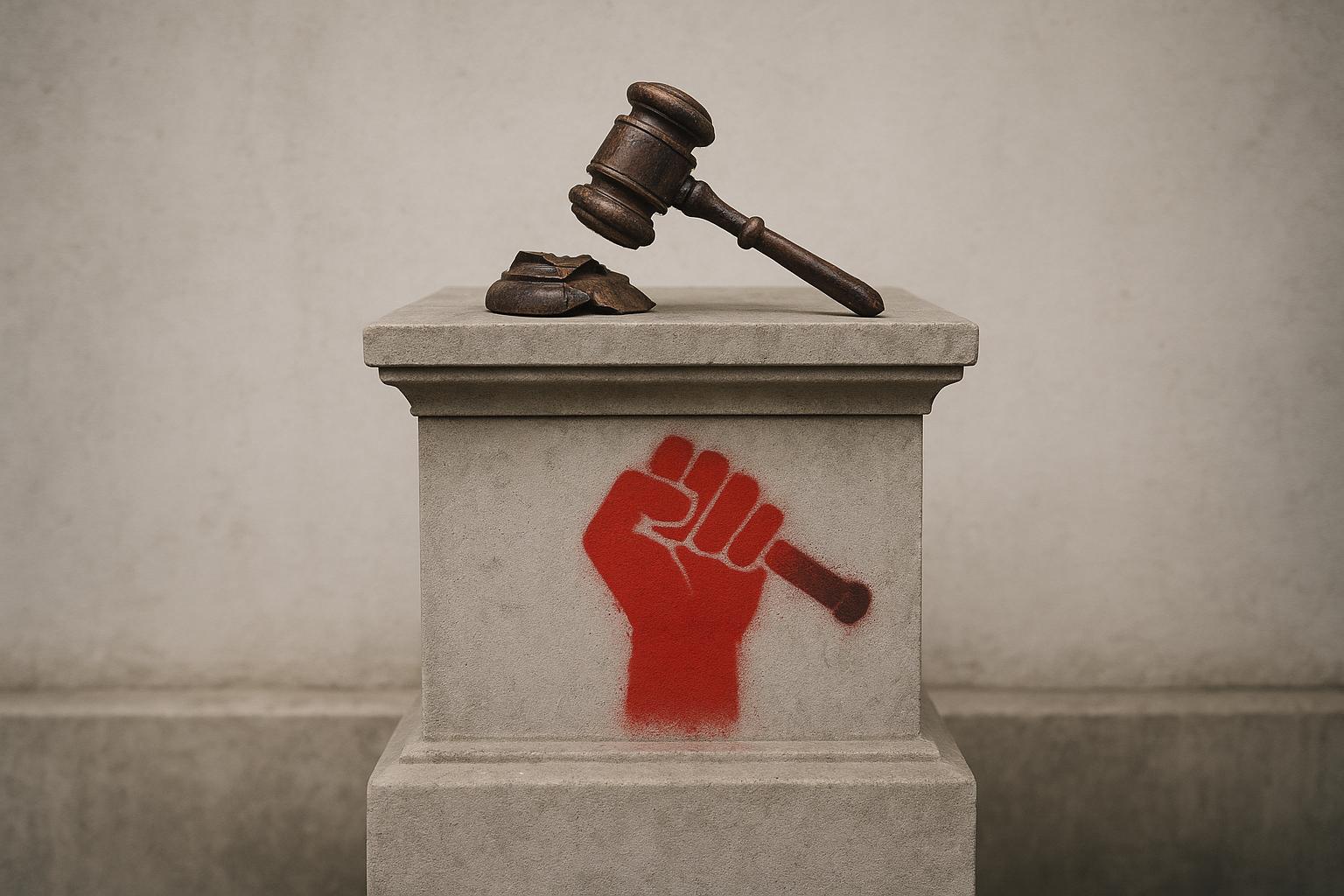A new mural by the elusive British street artist Banksy, depicting a judge violently striking a protester with a gavel, has been removed from the wall of London’s Royal Courts of Justice. The artwork showed a protester lying on the ground clutching a blood-splattered placard, while a judge in traditional wig and gown appeared to beat him. The striking image was widely interpreted as a critique of the UK government's recent ban on the activist group Palestine Action, whose members have been involved in controversial acts and were designated a terrorist organisation. The mural was swiftly erased on the orders of court administrators, citing the 143-year-old Victorian Gothic Revival courthouse's status as a protected historic site, which must maintain its original character.
The artwork appeared mysteriously on Monday and was authenticated by Banksy through his usual channel — a photo posted on Instagram. Known for his politically charged work addressing issues such as war, migration, and civil liberties, Banksy’s latest mural has resonated strongly with activists and the wider public. Some saw the piece as a direct response to events surrounding Palestine Action, whose efforts to contest the ban have been the subject of recent judicial proceedings at the very courthouse where the mural was painted. These protests recently led to the arrest of nearly 900 demonstrators in London, underscoring tensions around civil rights and political dissent in the UK.
The Royal Courts of Justice house the Court of Appeal and the High Court, both of which have heard cases linked to Palestine Action’s legal challenge against the ban. While appellate judges initially rejected an appeal request, a High Court judge allowed the case to proceed, with ongoing government challenges to that ruling. The mural's placement at such a key legal site emphasised the connection between the artwork and contemporary struggles over the right to protest and freedom of expression.
Authorities reacted swiftly to the mural’s appearance. The Metropolitan Police launched an investigation into whether the artwork constituted criminal damage. Meanwhile, court officials moved to cover and ultimately remove the piece to preserve the historic building’s façade. Barriers were erected around the site to manage public attention and protect the wall in the short term, but the decision to scrub the mural reflects the balancing act between heritage conservation and provocative contemporary art.
Banksy’s spokesperson has not commented on the matter, maintaining the artist’s characteristic silence on his creations post-release. The mural adds to Banksy’s long record of stirring public debate through street art, including notable pro-Palestinian works on the West Bank barrier and installations addressing state power and social injustice around the world. The removal of this latest mural underscores the contentious intersection of art, politics, and legal authority, highlighting ongoing concerns about government measures perceived by critics as limiting peaceful protest and civil liberties.
📌 Reference Map:
- Paragraph 1 – [1], [2], [3]
- Paragraph 2 – [1], [3], [4]
- Paragraph 3 – [1], [4]
- Paragraph 4 – [1], [2], [3]
- Paragraph 5 – [1], [3], [5], [6], [7]
Source: Noah Wire Services
